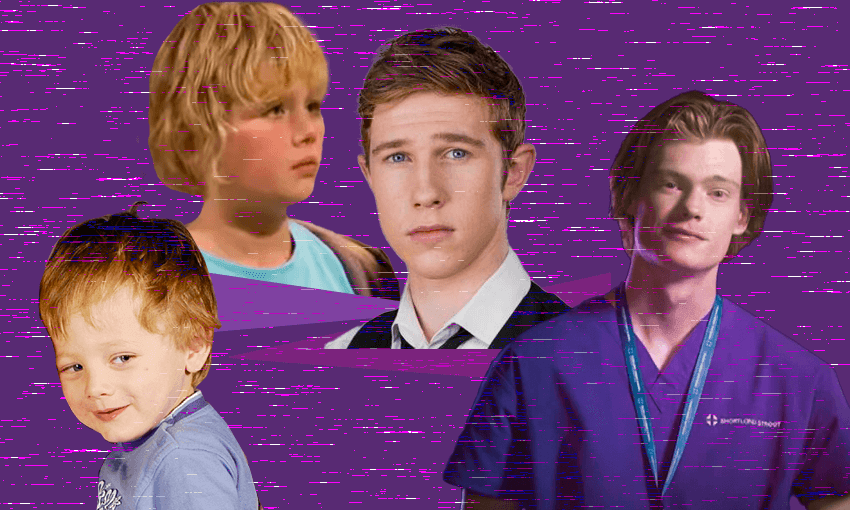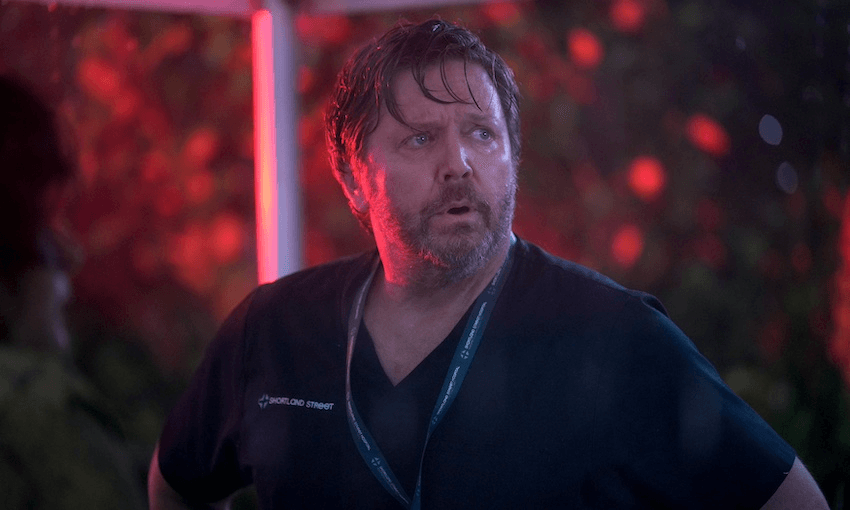He’s one of Shortland Street’s longest-running characters, and he’s now been played by five different actors. We look back at the evolution of Harry Warner.
Once again, Harry Warner has changed before our very eyes. Not one, not two, but five different actors have played the role of Chris Warner’s bratty son over the past two decades, and most shocking of all, it seems Harry’s father hasn’t even noticed. While Shortland Street fans have watched one Harry morph into another, each new version delivering the same moody antics but with a slightly different face, Dr Love has barely blinked an eye. Rude? I’ll show you rude.
For all the changes to Harry Warner, the character has remained consistent in his ability to polarise audiences. Some admire his love of drama, others loathe his indulgent behaviour. For every Harry devotee who releases an inspiring love song about Warner junior, there’s a Shorty fan who finds themselves foaming over his latest tantrum. Take this ancient Facebook feedback from 2010 about a storyline where young Harry ran away. Where had Harry gone? The nation was divided about whether it should even care.
Don’t stress, New Zealand, Harry came back. Earlier this month, Xander Manktelow became the fifth actor to step into the character’s shoes, ushering in a new era of Harry. Let’s take a look back on the five messy lives of the Warner prodigal son.
Harry #1 and #2: Callum Campbell-Ross (2002-2006) and Joshua Thompson (2002)
Harry Warner was born on Shortland Street’s tenth anniversary, the legacy of a one-night stand between local hornbag Dr Chris Warner and party nurse Toni Thompson. Initially Harry was played by two babies, Callum Campbell-Ross and Joshua Thompson, but according to Campbell-Ross’ mother Karyne Ross, one baby grew faster than the other and the two Harries began to look noticeably different. Roll the Shortland Street end credits, because it was goodbye to Joshua Thompson, Harry #1.
For the next four years, Harry was played solely by Campbell-Ross. Despite living a dramatic life (kidnapped three times in two years and the victim of an intense custody battle), Harry spent his days reading books, eating snacks and saying very little – the kind of life many of us aspire to. Harry was usually oblivious to the drama going on around him, although Ross remembers her son picking up on the bad vibes in one tense storyline involving Harry’s evil uncle Dom (Shane Cortese). She says Campbell-Ross never warmed to Cortese because of it. “I always felt really sorry for Shane because he was such a lovely guy,” Ross recalls.
Campbell-Ross stopped playing Harry when the role began to demand more of him. “He was a stubborn, strong-willed child, and there was stuff he didn’t want to do,” Ross says. Naughty Harry was just starting to step into his potency, and Ross recalls an infamous scene where her son was asked to destroy a huge sandcastle. It was as big as he was, she remembers, and he simply refused to do the wrong thing. “We played the footage at his 21st and he just throws this massive tantrum,” Ross laughs. Campbell-Ross’s reluctance to misbehave spelled the end of his golden run.
For Harry Warner, however, it was only the beginning.
Harry #3: Henry Williams (2006-2009)
Played by Henry Williams, Harry #3 began as an innocent child who made forts out of toast, but we all know what a slippery slope bread can be. For some, it’s a nutritious meal to start the day. For Harry Warner, it was a gateway drug to chaos and electrocution.
Harry #3 was a spoiled brat who craved his parent’s attention. Toni and Chris sent Harry to posh private school St Barts, but forgot to pick him up at three o’clock. Harry drew dark pictures that symbolised the cursed toast fort of his soul, but Toni and Chris didn’t care. They didn’t even notice when Harry ran away from home. Harry was actually hiding in a cupboard, but Toni and Chris probably didn’t even know they had a cupboard.
Toni called him a “stroppy little beggar”, but you can’t blame Harry for being a little shit. What do you expect when your father is a pash machine and your mother falls in love with your uncle Guy and abducts you to somewhere called “Christchurch”? Chris finally managed to track his son down, but Harry refused to return to Ferndale unless his new puppy Spanner came too. Spanner! No wonder this kid had issues.
Toni died of kidney failure in 2008, and afterwards Harry almost drowned in the stream of thirsty women desperate to become his stepmother. Harry made Chris break up with Brooke Freeman, blamed Libby Jeffries for the death of his rabbit, and even bit Huia Samuels’ leg. Not cool, Dirty Harry. Not cool.
Harry #4: Reid Walker (2009-2018)
In 2009, Harry went to Italy and came back an entirely different person. Mamma mia, as they say in the medical world. Now played by Reid Walker, this era was peak Harry. Our hero grew from a wayward child into a troubled young man, and as the pubescent hormones surged through teenage Harry’s veins, so did a yearning for chaos.
Harry took secret photos of nurse Lucy and put them online, suffered through his dad singing “Anchor Me” in public, and caused an overflowing bath to fall through the ceiling. He also stole Rachel McKenna’s car, even though he could barely see over the steering wheel. Harry didn’t care. He was a rebel without a cause, and it was no surprise he died for 45 minutes after drinking some bad rocket fuel during a Halloween party in 2013.
Harry Warner, Demon Child also faced adult problems, like his girlfriend Pixie dying of cancer and his father seeing his dick pic on the iPad. Harry never recovered from having to tell Chris that it was indeed his penis, so he fled to China on a school exchange and promptly impregnated his homestay sister.
Harry #5: Xander Manktelow (2023-????)
After an absence of five years, Prince Harry has returned to claim his throne. Now a surgical registrar at Shortland Street, Harry ditched the Warner surname and sped through seven years of medical training in what seems like an illegally condensed timeframe. Harry’s blonde locks have also been replaced with a flaming red head of hair. Actor Xander Manktelow reckons Harry Warner V will prove to be more mature than the Hazzas of yore.
“Coming in, Harry’s quite misunderstood by everyone,” Manktelow says, adding that Harry is now older and wiser. “I think you’ll see that he’s really got quite a big heart and there’s a lot more to him than what he chooses to show people”. As for stepping into a role that four other actors have already made their own, it’s “definitely strange” says Manktelow. “There’s obviously the expectations that people may have, but I’m just having fun with it,” he says. Let’s just hope he keeps away from the toaster.
Shortland Street screens Monday-Friday on TVNZ 2 at 7pm and streams on TVNZ+.
Follow our pop culture podcast The Real Pod on Apple Podcasts, Spotify or your favourite podcast app.



